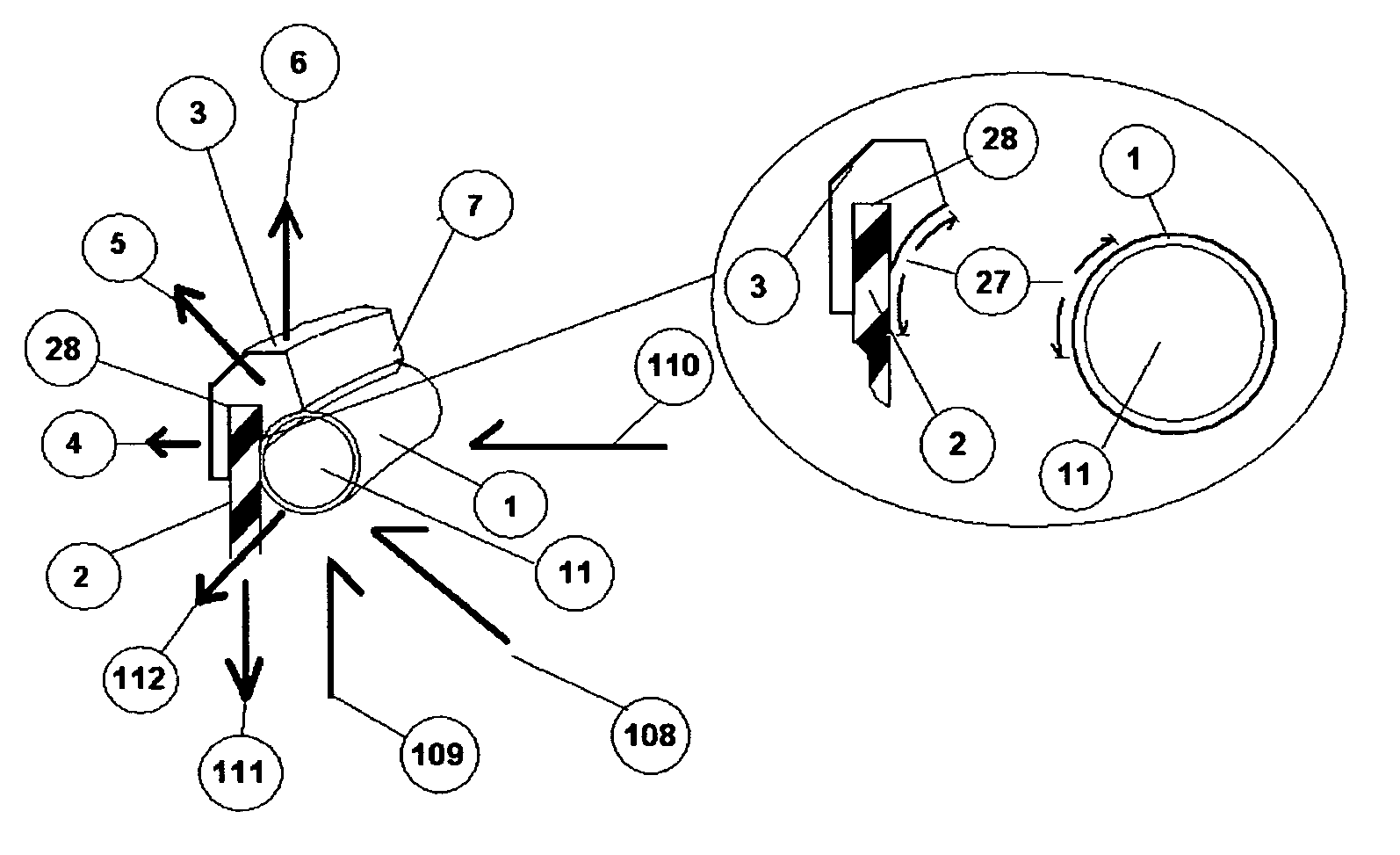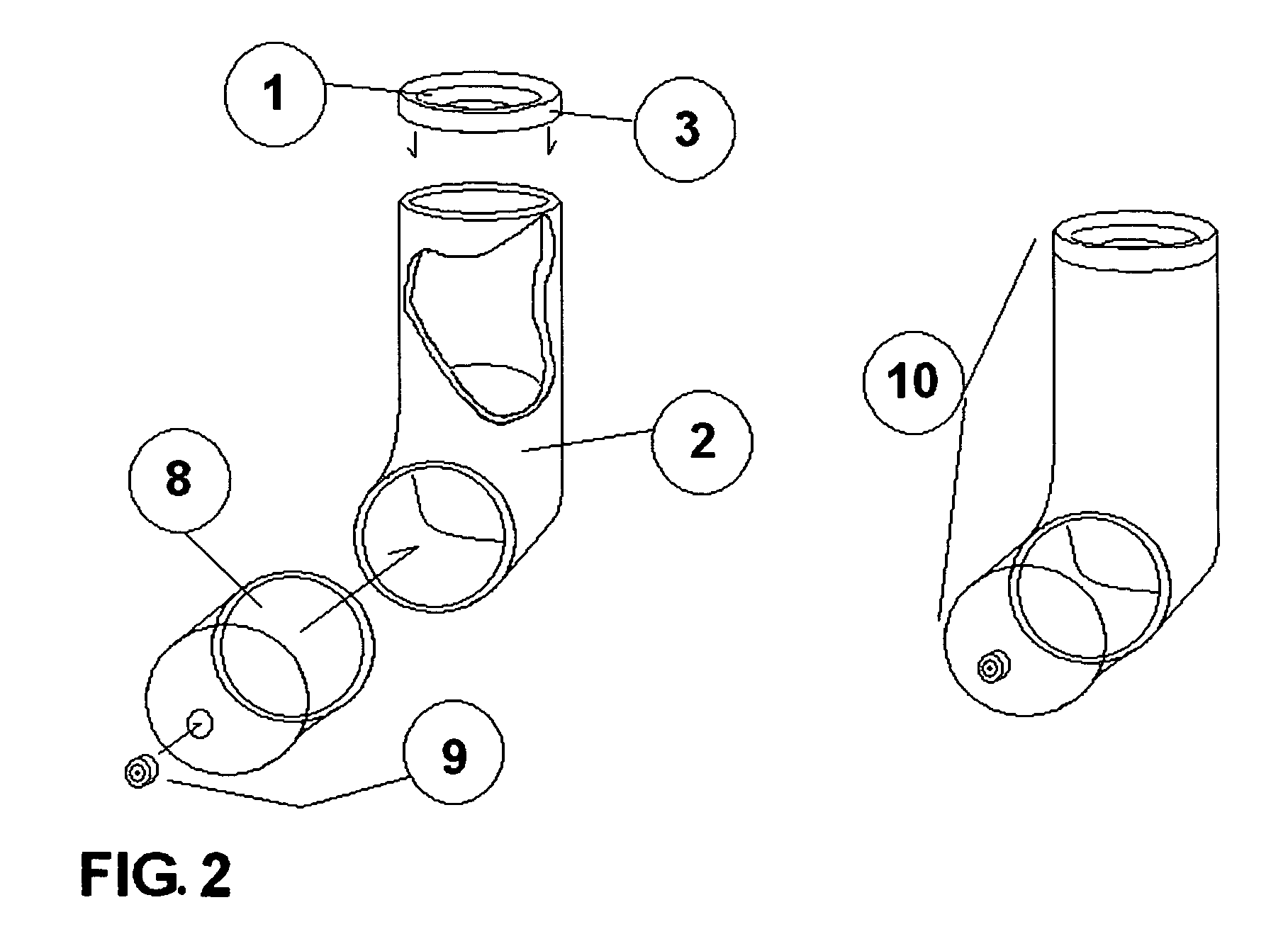Selective destruction of cancerous cellular tissue
a cancerous cellular tissue and selective destruction technology, applied in the field of selective destruction of cancerous cellular tissue, can solve the problems of limited vacuum application amount, damaged surrounding tissue, and inability to achieve long-term soft tissue enlargement without damage to soft tissue, etc., to achieve less resilient, enhance healthy cells, and reduce the effect of decompression
- Summary
- Abstract
- Description
- Claims
- Application Information
AI Technical Summary
Benefits of technology
Problems solved by technology
Method used
Image
Examples
Embodiment Construction
DYNAMIC FLUID FILLED LOAD DIFFUSION SEAL1VACUUM VESSEL2DYNAMIC ENERGY TRANSFER COLLAR3LONGITUDINAL ENERGY FLOW4DIAGONALLY UPWARD ENERGY FLOW5VERTICALLY UPWARD ENERGY FLOW6DYNAMIC ENERGY TRANSFER COLLAR DIRECTIONAL ANGLE7TRANSPARENT VACUUM VESSEL8BI-DIRECTIONAL CHECK VACUUM VALVE9PORTABLE LOWER EXTREMITY DECOMPRESSION DEVICE AND CHAMBER10ASSEMBLYFLUID FILLED CHAMBER11DYNAMIC ENERGY TRANSFER COLLAR MITTEN STYLE EMBODIMENT12PORTABLE UPPER EXTREMITY DECOMPRESSION DEVICE AND CHAMBER13ASSEMBLYDYNAMIC FLUID FILLED LOAD DIFFUSION SEAL MITTEN STYLE14EMBODIMENTTHUMB DECOMPRESSION DEVICE AND CHAMBER ASSEMBLY15INDEX FINGER DECOMPRESSION DEVICE AND CHAMBER ASSEMBLY16MIDDLE FINGER DECOMPRESSION DEVICE AND CHAMBER ASSEMBLY17TRANSPARENT VACUUM VESSEL MITTEN STYLE EMBODIMENT18RING FINGER DECOMPRESSION DEVICE AND CHAMBER ASSEMBLY19PINKY FINGER DECOMPRESSION DEVICE AND CHAMBER ASSEMBLY20FINGER DEVICE ASSEMBLY MANIFOLD21SECONDARY TRANSPARENT VACUUM MULTIPLIER VESSEL22MOUNTING AND DIGIT SERVICING PLATFO...
PUM
 Login to View More
Login to View More Abstract
Description
Claims
Application Information
 Login to View More
Login to View More - R&D
- Intellectual Property
- Life Sciences
- Materials
- Tech Scout
- Unparalleled Data Quality
- Higher Quality Content
- 60% Fewer Hallucinations
Browse by: Latest US Patents, China's latest patents, Technical Efficacy Thesaurus, Application Domain, Technology Topic, Popular Technical Reports.
© 2025 PatSnap. All rights reserved.Legal|Privacy policy|Modern Slavery Act Transparency Statement|Sitemap|About US| Contact US: help@patsnap.com



